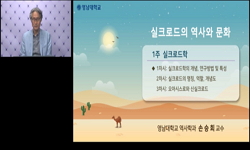실크로드 지역은 현재 중국의 신강성에 속하는 방대한 지역이고, 수나라, 당나라 때의 칠부기·구부기·십부기 중의 여러 지역을 포함하고 있다. 즉 안국기, 구자기, 소륵기, 강국기, 고창기 �...
http://chineseinput.net/에서 pinyin(병음)방식으로 중국어를 변환할 수 있습니다.
변환된 중국어를 복사하여 사용하시면 됩니다.
- 中文 을 입력하시려면 zhongwen을 입력하시고 space를누르시면됩니다.
- 北京 을 입력하시려면 beijing을 입력하시고 space를 누르시면 됩니다.

실크로드 지역 산악(散樂)의 한·중·일 전래 = The introduction of the Silkroad Sanak(散樂) to Korea, China and Japan
한글로보기https://www.riss.kr/link?id=A105298969
- 저자
- 발행기관
- 학술지명
- 권호사항
-
발행연도
2009
-
작성언어
-
-
주제어
산악 ; 백희가무 ; 실크로드 ; 최치원 ; 향악잡영오수 ; Silkroad ; mask dance ; dance music ; Korean music ; Chinese music ; Jaanese music ; Sanak
-
KDC
679
-
등재정보
KCI등재
-
자료형태
학술저널
-
수록면
1-19(19쪽)
- 제공처
- 소장기관
-
0
상세조회 -
0
다운로드
부가정보
국문 초록 (Abstract)
실크로드 지역은 현재 중국의 신강성에 속하는 방대한 지역이고, 수나라, 당나라 때의 칠부기·구부기·십부기 중의 여러 지역을 포함하고 있다. 즉 안국기, 구자기, 소륵기, 강국기, 고창기 등은 현재 중국 신강성 및 우즈베키스탄 등의 지역이 포함되어 있어 그곳에서 서쪽으로 가는 길로 이어졌던 것이다. 그러한 지역에서 연행되던 악·가·무가 혼합된 형태의 공연예술이 역사적으로 존재해왔다. 그러한 것들을 백희가무 혹은산악이라고 하였으며 그러한 공연예술의 장르에 대한 명칭은 많은 종류가 있다.
칠부기와 구부기·십부기 중에서 강국기는 최치원의 향악잡영오수의 속독과 같은 것으로 현재의 우즈베키스탄의 사마르칸트와 관련이 있다. 최치원의 향악잡영오수의 명칭과 관련된 여러 명칭들을 표로 정리하면 다음과 같다.
이상과 같이 서역에서 성행하던 각종 산악이 중국에서는 여러 지역에서 연행되었을것으로 추측되며 그러한 것들이 고구려와 신라에 전승되어 최치원의 향악잡영오수에 그 모습이 기록되었다. 그것들이 일본에 여러 형태로 남아있고 그 악보가 남아있음으로 이들 산악의 옛 모습을 찾아볼 수 있는 것이다. 다시 말하면 일본에 남아있는 악보를 통하여 한국과 중국 그리고 실크로드 지역의 옛 산악을 재현하여 볼 수도 있을 것이다.
다국어 초록 (Multilingual Abstract)
There is a writings of Choi chi-won called Hyangak chabyung osu (five poems on Korean music) in Samguksagi, and the titles are like following : 1. Keumhwan(金丸) 2. Woljeon(月顚) 3. Daemyun(大面) 4. Sokdock(束毒) 5. Sanye(狻猊) 1...
There is a writings of Choi chi-won called Hyangak chabyung osu (five poems on Korean music) in Samguksagi, and the titles are like following :
1. Keumhwan(金丸)
2. Woljeon(月顚)
3. Daemyun(大面)
4. Sokdock(束毒)
5. Sanye(狻猊)
1. Keumhwan is also called nonghwan , means playing the round ball. The scene is carved on hwasang-seok(畵像石) stone of Han dynasty and has already been existed in China, Korea and Japan from the ancient times. It is also called as Jabgi(襍伎) , baeckki (白) , jabhee(襍) .
2. Woljeon - also woljeon and wolcheon(越天) - was also pronounced and written as hwajeon (和田) and is from Cheonnam mountain in Khotan(于關), one of the major jade producing area. There are couple farming villages such as hwajeon(化田) are still exist are around. Typical Japanese court music Etenraku is written as woljeon-ak(越殿樂) , and has certain relation to the gurodabushi(黑田) , folk music of fukuoka region.
3. Daemyun is a dance that has movements such as running of the ghost who wears gold mask with red stick in his hand and the dance of fabulous bird in early morning. It also resembles Japanese court dance and music nanreung-ak(蘭陵樂) . It is most likely that the sanak-daemyun of China and hayngak-daemyun of Korea are the same ones in different names.
4. Sokdock has the same phonetic pronunciation with the judock as in toeijudock (Tashudoru), one of the Japanese court music and dance, and also written as sookdock (宿德) . The origin of a word roots from the area called Soghd or Sogdiana , currently known as Samarquand, which also called sokteuk(粟特) in ancient chinese literature.
5. Sanye is a lion dance. It is also found in Shinseo-goakwon(信西古樂圓) of Japan and in the book Tongjeon of China. It has originally came from the guja(龜玆) region and spread out widely to the north east asia areas. Currently, it is performed as a kind of folk dance in many areas including China, Korea and Japan.
As a conclusion, music and the dances from Silkroad areas are introduced to Jangan as homuak(胡舞樂) during the Tang Dynasty, and to Japan through Shilla Dynasty. There are more Sanak repertoire that is transmitted and performed currently in Japan compare to that of Korea and China including the ones that has discontinued the transmission in both countries long time ago.
목차 (Table of Contents)
- <국문초록>
- Ⅰ. 내두리
- Ⅱ. 최치원의 향악잡영오수
- Ⅲ. 마무리
- <참고문헌>
- <국문초록>
- Ⅰ. 내두리
- Ⅱ. 최치원의 향악잡영오수
- Ⅲ. 마무리
- <참고문헌>
동일학술지(권/호) 다른 논문
-
- 국립국악원
- 권혜근(Kwon Hye keun)
- 2009
- KCI등재
-
- 국립국악원
- 김소리(Kim so ri)
- 2009
- KCI등재
-
- 국립국악원
- 김성혜(Kim Seong hye)
- 2009
- KCI등재
-
- 국립국악원
- 김영희(Kim Young hee)
- 2009
- KCI등재




 스콜라
스콜라







